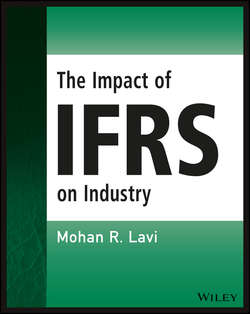Читать книгу The Impact of IFRS on Industry - Lavi Mohan R. - Страница 15
На сайте Литреса книга снята с продажи.
Chapter 2
Summary of Disclosures Under IFRS Standards
2.7 IFRS 10 Consolidated Financial Statements
Оглавление2.7.1 Significant Judgements and Assumptions
An entity discloses information about significant judgements and assumptions it has made (and changes in those judgements and assumptions) in determining:
● that it controls another entity;
● that it has joint control of an arrangement or significant influence over another entity;
● the type of joint arrangement (i.e. joint operation or joint venture) when the arrangement has been structured through a separate vehicle.
2.7.2 Interests in Subsidiaries
An entity shall disclose information that enables users of its consolidated financial statements to:
● understand the composition of the group;
● understand the interest that non-controlling interests have in the group's activities and cash flows;
● evaluate the nature and extent of significant restrictions on its ability to access or use assets, and settle liabilities, of the group;
● evaluate the nature of, and changes in, the risks associated with its interests in consolidated structured entities,
● evaluate the consequences of changes in its ownership interest in a subsidiary that do not result in a loss of control; and
● evaluate the consequences of losing control of a subsidiary during the reporting period.
2.7.3 Interests in Unconsolidated Subsidiaries
In accordance with IFRS 10 Consolidated Financial Statements, an investment entity is required to apply the exception to consolidation and instead account for its investment in a subsidiary at fair value through profit or loss.
Where an entity is an investment entity, IFRS 12 requires additional disclosure, including:
● the fact that the entity is an investment entity;
● information about significant judgements and assumptions it has made in determining that it is an investment entity, and specifically where the entity does not have one or more of the “typical characteristics” of an investment entity;
● details of subsidiaries that have not been consolidated (name, place of business, ownership interests held);
● details of the relationship and certain transactions between the investment entity and the subsidiary (e.g. restrictions on transfer of funds, commitments, support arrangements, contractual arrangements); and
● information where an entity becomes, or ceases to be, an investment entity.
2.7.4 Interests in Joint Arrangements and Associates
An entity shall disclose information that enables users of its financial statements to evaluate:
● the nature, extent and financial effects of its interests in joint arrangements and associates, including the nature and effects of its contractual relationship with the other investors with joint control of, or significant influence over, joint arrangements and associates; and
● the nature of, and changes in, the risks associated with its interests in joint ventures and associates.
2.7.5 Interests in Unconsolidated Structured Entities
An entity shall disclose information that enables users of its financial statements to:
● understand the nature and extent of its interests in unconsolidated structured entities; and
● evaluate the nature of, and changes in, the risks associated with its interests in unconsolidated structured entities.
